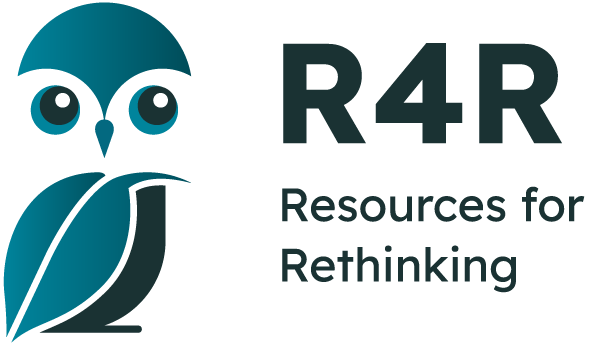- Home
- Tutorial
- Resource Guides
- Focus Areas
- LSF Programs
-
Professional
Development - Review Process
-
A project of LSF

Search for Resources
Description
Oil Spill Solutions is a STEM resource in which students learn about the work of engineers and the engineering design process with a focus on oil spills and their impact on the environment.
The primary activity will have the students working in groups of 2-3 as they are charged with designing and building an oil containment and clean up system. A student worksheet is included with reflection questions. Extension activities are provided in the 'Dig Deeper' section.
General Assessment
What skills does this resource explicitly teach?
The focus of this resource is on building STEM competencies and experiences.
Strengths
- Highly engaging STEM resource
- Teaches students about "Productive Failure"
- All materials are provided or readily available
- Easy to follow lesson plan
Weaknesses
- Lack of assessment materials
- Lack of suggestions/accommodations for students who may have difficulties with the materials
Recommendation of how and where to use it
Oil Spill Solutions is an excellent STEM resource for the middle school Science classroom. It addresses curriculum outcomes linked to habitats and human impact on the environment.
Relevant Curriculum Units
The following tool will allow you to explore the relevant curriculum matches for this resource. To start, select a province listed below.
- Step 1Select a province
- Alberta
- Step 2Select a grade level
- Grade 7
- Step 3Select a subject
- Science
- Step 4Relevant matches
- Interactions and Ecosystems
- Grade 8
- Step 3Select a subject
- Science
- Step 4Relevant matches
- Freshwater and Saltwater Systems
- Grade 9
- Step 3Select a subject
- Environmental Science
- Step 4Relevant matches
- Environment and Outdoor Education: Environmental Investigations
- Science
- Step 4Relevant matches
- Environmental Chemistry
- Manitoba
- New Brunswick
- Step 2Select a grade level
- Grade 6
- Step 3Select a subject
- Technological Education
- Step 4Relevant matches
- Technology: Exploration/Design & Experimentation/Application: Design Thinking Skills
- Grade 7
- Step 3Select a subject
- Science
- Step 4Relevant matches
- Science 7 Earth Surface Processes: Learning and Living Sustainably
- Technological Education
- Step 4Relevant matches
- Exploration/Design & Experimentation/Application: Design Thinking Skills
- Newfoundland & Labrador
- Northwest Territories
- Nova Scotia
- Nunavut
- Step 2Select a grade level
- Grade 7
- Step 3Select a subject
- Science
- Step 4Relevant matches
- Interactions and Ecosystems
- Grade 8
- Step 3Select a subject
- Science
- Step 4Relevant matches
- Freshwater and Saltwater Systems
- Interactions in Our Environment
- Grade 9
- Step 3Select a subject
- Science
- Step 4Relevant matches
- Chemistry and the Environment
- Ontario
- Step 2Select a grade level
- Grade 7
- Step 3Select a subject
- Science & Technology
- Step 4Relevant matches
- Life Systems: Interactions in the Environment
- STEM Skills and Connections
- Grade 8
- Step 3Select a subject
- Science & Technology
- Step 4Relevant matches
- Earth and Space Systems: Water Systems
- STEM Skills and Connections
- Grade 9
- Step 3Select a subject
- Science
- Step 4Relevant matches
- :Biology: Sustainable Ecosystems
- STEM Skills, Careers, and Connections
- Prince Edward Island
- Quebec
- Step 2Select a grade level
- Grade 7
- Step 3Select a subject
- Science & Technology
- Step 4Relevant matches
- The Technological World
- Grade 8
- Step 3Select a subject
- Science & Technology
- Step 4Relevant matches
- The Technological World
- Grade 9
- Step 3Select a subject
- Science & Technology
- Step 4Relevant matches
- Applied Science & Technology: The Technological World
- Saskatchewan
- Step 2Select a grade level
- Grade 7
- Step 3Select a subject
- Science
- Step 4Relevant matches
- Science 7: Earth and Space Science: Earth’s Crust and Resources
- Science 7: Life Science: Interactions within Ecosystems
- Grade 8
- Step 3Select a subject
- Science
- Step 4Relevant matches
- Science 8: Water Systems on Earth
Themes Addressed
Human Health & Environment (1)
- Environmental Contaminants & Health Hazards
Waste Management (1)
- Liquid Waste
Water (2)
- Marine Environments
- Watershed Protection
Sustainability Education Principles
| Principle | Rating | Explanation |
|---|---|---|
| Consideration of Alternative Perspectives | Very Good | The resource allows the students to take the lead in creating and testing their ideas. There are no biases present, and the students are encouraged to engage, test and reconsider their ideas if they do not work. |
Consideration of Alternative Perspectives:
| ||
| Multiple Dimensions of Problems & Solutions | Satisfactory | The students are not directed in any particular direction; they are encouraged to see the issue of oil spill cleanup and containment as engineers would see the issue and are taught how engineers would approach the problem and solve it. |
| Multiple Dimensions of Problems & Solutions: Effectively addresses the environmental, economic and social dimensions of the issue(s) being explored.
| ||
| Respects Complexity | Satisfactory | The issue of oil spills is explained with the sharing of background information. The simulation in which the students contain and clean up the oil also allows the students to gain a good understanding of the issue and the challenges involved. |
| Respects Complexity: The complexity of the problems/issues being discussed is respected. | ||
| Acting on Learning | Good | The focus of this resource is on how to solve problems and to try a variety of ideas and create observable change in one's community. |
| Acting on Learning: Learning moves from understanding issues to working towards positive change — in personal lifestyle, in school, in the community, or for the planet
| ||
| Values Education | Very Good | As the resource has a focus of developing STEM skills, the students are given the time and space to explore their own ideas, test them and modify if needed. |
| Values Education: Students are explicitly provided with opportunities to identify, clarify and express their own beliefs/values. | ||
| Empathy & Respect for Humans | Poor/Not considered | This is not the focus of this resource. |
| Empathy & Respect for Humans: Empathy and respect are fostered for diverse groups of humans (including different genders, ethnic groups, sexual preferences, etc.). | ||
| Personal Affinity with Earth | Good | Certainly the subject matter and the idea of an oil spill threatening an ecosystem and the lives of its inhabitants will create concern for the natural world. |
| Personal Affinity with Earth: Encourages a personal affinity with -the natural world.
| ||
| Locally-Focused Learning | Good | Care and consideration for the local environment is developed through the sharing of the impacts of an oil spill on the environment at the beginning of the lesson. |
| Locally-Focused Learning: Includes learning experiences that take advantage of issues/elements within the local community.
| ||
| Past, Present & Future | Good | The resource develops a sense of making a difference for the present and future. The past is not addressed. |
| Past, Present & Future: Promotes an understanding of the past, a sense of the present, and a positive vision for the future. | ||
Pedagogical Approaches
| Principle | Rating | Explanation |
|---|---|---|
| Open-Ended Instruction | Very Good | This resource is structured so that the students are encouraged to try different ideas and approaches to solving the problem of oil spill containment and cleanup. |
| Open-Ended Instruction
: Lessons are structured so that multiple/complex answers are possible; students are not steered toward one 'right' answer. | ||
| Integrated Learning | Satisfactory | This resource would primarily be used in the Science classroom. |
| Integrated Learning: Learning brings together content and skills from more than one subject area
| ||
| Inquiry Learning | Good | Students are provided with the materials, but they are allowed to trade for others optional materials to solve the oil containment and cleanup problem with their own ideas. |
| Inquiry Learning: Learning is directed by questions, problems, or challenges that students work to address.
| ||
| Differentiated Instruction | Good | The activity in the lesson addresses a wide variety of learning styles and allows students the time and space to explore their own ideas. There are however no strategies provided for learners who may experience difficulties with the material. |
| Differentiated Instruction: Activities address a range of student learning styles, abilities and readiness.
| ||
| Experiential Learning | Good | This resource presents a real-world, authentic problem that the students need to solve. |
| Experiential Learning: Authentic learning experiences are provided
| ||
| Cooperative Learning | Satisfactory | |
| Cooperative Learning: Group and cooperative learning strategies are a priority.
| ||
| Assessment & Evaluation | Poor/Not considered | Unfortunately, there are no assessment tools provided. The teacher could choose to create their own or collect the provided worksheet to use in assessing student learning. |
| Assessment & Evaluation: Tools are provided that help students and teachers to capture formative and summative information about students' learning and performance. These tools may include reflection questions, checklists, rubrics, etc. | ||
| Peer Teaching | Satisfactory | |
| Peer Teaching: Provides opportunities for students to actively present their knowledge and skills to peers and/or act as teachers and mentors.
| ||
| Case Studies | Good | In the Dig Deeper and Background Information sections there is information regarding examples of clean up methods. These are not actual case studies for students but do provide real world examples of what does work. |
| Case Studies: Relevant case studies are included. Case studies are thorough descriptions of real events from real situations that students use to explore concepts in an authentic context. | ||
| Locus of Control | Very Good | The students make all of the decisions in the activities in this resource from what materials to use to how to build, create and bring their ideas to life. |
| Locus of Control: Meaningful opportunities are provided for students to choose elements of program content, the medium in which they wish to work, and/or to go deeper into a chosen issue. | ||

